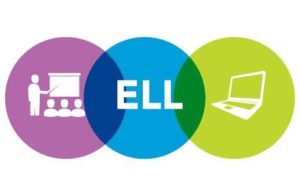Blended Bilingual Program
 The Blended Bilingual Program is designed to help first to third grade English Language Learners (ELL) students to develop outstanding Spanish reading skills supported by blended learning pedagogies.
The Blended Bilingual Program is designed to help first to third grade English Language Learners (ELL) students to develop outstanding Spanish reading skills supported by blended learning pedagogies.
Creating Conditions for Success
Goals
- Academic Goals: Aspire to improve college and career readiness by creating differentiated instruction, and rigorous learning opportunities.
- Fidelity to the Program: Faithfulness to Blending Learning and the Bilingual Programs.
- Data: Analysis of student data and compare it with overall district goals to set individual objectives.
Support
- Principal: Principal’s support is paramount to implement blended learning in school.
- Teachers: Build a team of educators committed to the project.
- Parents & Students: Include students and their families from the start of the project and throughout the implementation of the different phases of it.
Planning
Strategy and Timeline
- Three-year Time-frame: Design a calendar for the shift to digital instructional materials.
- First Semester
- Submit project for approval.
- Planning meeting with principal and parents.
- Students will be evaluated in the Spanish language (Fountas & Pinnell at the beginning and end of each semester. Accelerated Reader, and IStation every month).
- Flipped the classroom one course at a time.
- Students will be trained to interact with Canvas Learning Management System (LMS) and EdPuzzle videos.
- The first, second, and third grade DLE teachers will be encouraged to be trained in at least one of each of the following fields:
- Video Creation: Screen-Cast-O-Mattic and Office Mix
- Video Hosting: YouTube, TeacherTube, and Screencast.com
- Video Interaction: EdPuzzle and Office Mix
- Learning Management System (LMS): Canvas and Google Classroom
Some of these resources are free, and others have an educator’s free version.
- Second Semester
- Present the benefits of the Blended Learning Model and Flipped Classrooms to the first, second, and third grade DLE teachers.
- Exhibit data and show examples of students’ work using Blended Learning and Flipped Classroom projects.
- Create a database of videos and lesson plans that had positive outcomes, and modify or discard those that had none or little positive impact on students.
- Hold faculty meetings at least once per month to share ideas and vertical alignment planning.
- Every additional semester
- Evaluate students
- Evaluate faculty
- Evaluate new technologies
- Evaluate new pedagogies
- Train faculty
- Actualized database
- Be happy
- First Semester
- Instructional Model
- Rotation Station: Students transition from face-to-face instruction to online learning in classroom centers, computer lab, or both.
- Platform and Content
- Platform
- Standards-aligned gradebook
- Digital Content
- IStation
- Accelerated Reader
- Device Acquisition
- Start with what we got: The program will start with the resources currently available. The acquisition of devices will be gradual, according to the resources available to the institution.
- Laptops or Chromebooks: Maximize resources to acquire devices to a ratio of one device for every three students (One to one ratio is not recommended).
- Bring-Your-Own-Device (BYOD): A method of promoting device-enabled learning with lower costs,
- Platform
Implementation
Infrastructure
- Broadband: 100 megabits per second (Mbps) for every thousand students.
- Networking Equipment & Ongoing Management: Already available.
- Other Hardware & Software:
- Laptop carts to house and power laptops
- Headphones to enable students to receive audio
- Security devices and antivirus software
- Cables
- Professional Development: Professional development should be targeted at helping all stakeholders understand and engage effectively in changing roles, even to ones that did not previously exist.
- Implementation Support: Multiple processes, tools, and training require being pulled together to enable teachers and students to succeed in classrooms. This challenging, time-intensive work demands dedicated attention, resources, and specific skills.
Improvement
Capture Lessons Learned
- Lessons need to be documented so educators can know what is working, what is not, and what lessons have been learned.
Measure Impact
- Collect meaningful data about the impact of the initiative on student learning, so set appropriate expectations with stakeholders.


